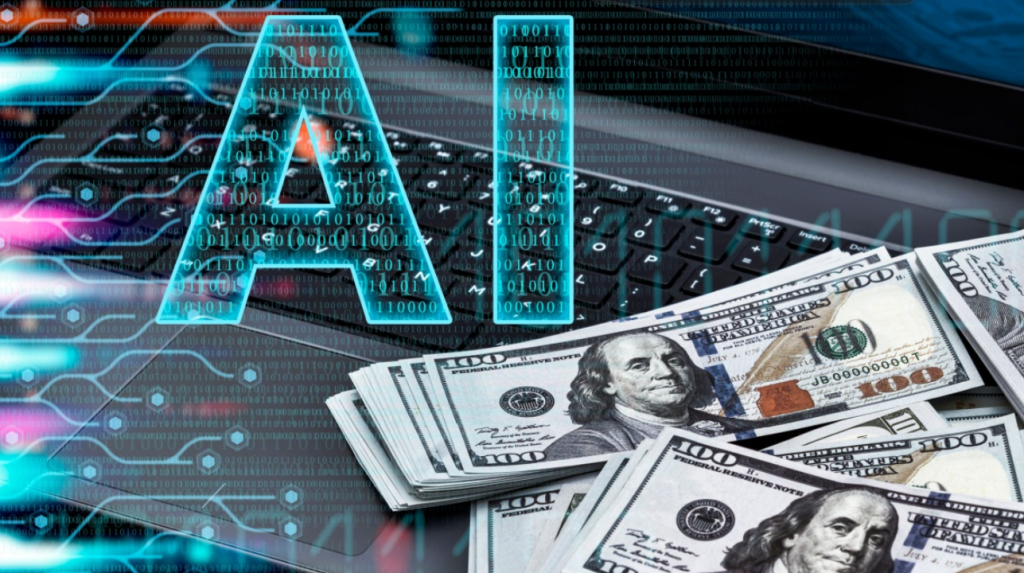The world is changing at an unprecedented pace. Artificial Intelligence (AI) is revolutionizing industries, making processes more efficient, and reshaping the global workforce. However, this transformation comes with a price: an increasing number of jobs are being automated, leaving many workers—especially highly skilled professionals—struggling to find well-paying positions. While AI is seen as a disruptor, it also presents new opportunities for income generation. Let’s explore how AI is affecting employment, the statistics behind this shift, and the solutions AI itself offers for financial stability.
The AI Job Displacement Crisis: What the Numbers Say

As AI-powered automation advances, job displacement is becoming a major concern worldwide. Numerous reports highlight the growing number of unemployed individuals, even among highly skilled workers. Here are some key statistics:
- According to a World Economic Forum (WEF) report, AI and automation could displace 85 million jobs globally by 2025, but at the same time, they will create 97 million new roles (WEF, 2020).
- A Goldman Sachs study estimates that AI could replace 300 million full-time jobs globally, particularly in administrative and legal roles (Goldman Sachs, 2023).
- In the United States, a study by the Brookings Institution found that 36% of U.S. jobs are at high risk of automation (Brookings, 2019).
- The International Labour Organization (ILO) reports that youth unemployment has risen in several developed economies, in part due to automation replacing entry-level jobs (ILO, 2022).
- In Europe, the automation of white-collar jobs is increasing, with McKinsey & Co. predicting that AI could affect over 20% of the current workforce by 2030 (McKinsey, 2021).
While these figures may seem alarming, the reality is that AI is not only displacing jobs but also creating new opportunities—especially for those willing to adapt.
Highly Skilled Professionals Are Also Struggling

Historically, automation primarily impacted low-skill jobs such as factory work, retail, and customer service. However, AI is now encroaching on white-collar professions that were once considered “safe.”
- Lawyers & Paralegals: AI-powered legal research tools like ChatGPT-4 and Harvey AI can draft contracts, analyze case law, and predict legal outcomes, reducing the need for junior associates.
- Accountants & Financial Analysts: Tools like Intuit QuickBooks AI and Bloomberg Terminal AI automate complex financial analysis, making some roles redundant.
- Software Engineers: AI-driven coding assistants such as GitHub Copilot and DeepMind AlphaCode can generate and debug code, reducing the demand for junior developers.
- Doctors & Radiologists: AI-powered diagnostics, such as those developed by Google DeepMind, can detect diseases faster and more accurately than human specialists.
For many professionals, the question is no longer whether AI will impact their careers but how they can leverage AI to stay ahead.
AI as a Solution: How You Can Use It to Earn Money

Instead of viewing AI as a threat, individuals can embrace it as a tool for financial success. Here are some practical ways AI can help generate income:
1. AI-Assisted Freelancing
Many freelancers are already using AI to increase efficiency and offer better services:
- Content creation: AI-powered tools like Jasper AI and Copy.ai help generate high-quality articles, ad copy, and social media content.
- Graphic design: Tools like DALL·E 3 and Canva AI assist in creating stunning visuals for businesses.
- Video editing: AI tools such as Runway ML and Descript automate video production, making it accessible even to non-experts.
2. AI-Driven Investing & Trading
AI-powered financial tools can help users make better investment decisions:
- Robo-advisors like Betterment and Wealthfront automate investment strategies based on risk tolerance.
- AI stock prediction tools such as TuringTrader and Zacks AI analyze market trends and suggest profitable trades.
3. Creating and Selling AI-Generated Products
Entrepreneurs can monetize AI-generated content and digital products:
- AI-generated art: Platforms like MidJourney allow users to create and sell AI-generated artwork.
- AI voiceovers: Using tools like Murf AI and ElevenLabs, creators can generate voiceovers for audiobooks, YouTube videos, and ads.
- AI music production: Tools like AIVA AI and Boomy help musicians and producers create soundtracks for commercial use.
4. AI-Enhanced Online Courses & Coaching
With the rise of AI-driven education, there’s a growing demand for courses on:
- How to use AI tools effectively in business and marketing.
- AI-based automation for entrepreneurs.
- Coding and machine learning for beginners.
5. Building AI-Powered Businesses
Entrepreneurs can launch AI-driven startups that provide:
- Chatbots and virtual assistants for businesses.
- AI-based copywriting services.
- Automated marketing solutions using AI-powered SEO tools.
The Future: Adapting to an AI-Driven Economy

As AI continues to evolve, adaptation is key. Here’s how individuals and businesses can prepare:
- Develop AI literacy: Understanding AI tools and their applications will be crucial for career success.
- Focus on human-AI collaboration: Jobs that combine human creativity with AI efficiency will thrive.
- Build multiple income streams: Using AI for passive income can provide financial security in an uncertain job market.
Conclusion: AI is a Disruptor—But Also an Opportunity
The world is changing rapidly, and AI is at the forefront of this transformation. While automation is eliminating many traditional jobs, it is also creating new ways to earn money. Those who embrace AI and adapt to its capabilities will not only survive but thrive in the AI-driven future.
If you’re looking to leverage AI to secure your financial future, now is the time to take action. Whether through freelancing, investing, digital products, or entrepreneurship, AI offers countless opportunities—waiting for those bold enough to seize them.
Sources:
- World Economic Forum. (2020). “The Future of Jobs Report.” WEF Report
- Goldman Sachs. (2023). “Generative AI and the Future of Work.” Goldman Sachs Report
- Brookings Institution. (2019). “Automation and the Future of Work.” Brookings Study
- McKinsey & Co. (2021). “The Future of Work in Europe.” McKinsey Report
- International Labour Organization. (2022). “Global Employment Trends.” ILO Report

